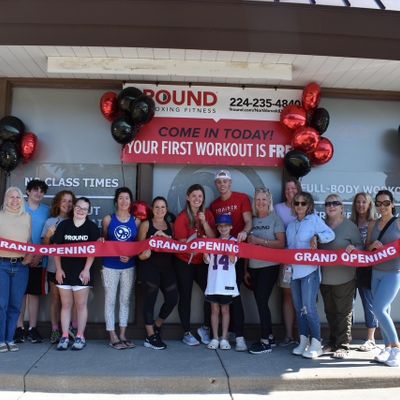6 Simple Tips for Portion Control

Making healthy food choices is only half the battle when it comes to nutrition — the other half is learning how to use portion control. This involves managing the amount of food you actually consume in one sitting to make sure you’re not eating too much or too little based on your body’s needs and your personal fitness goals. It’s a delicate process that often gets clouded by increased portion sizes at restaurants and grocery stores alike.
But have hope! We’re here to shed some light on how to control your portion sizes for your weight loss or weight management goals. Take a look at our 6 simple tips for portion control below to learn a few new tactics to use in your quest for healthier eating habits.
#1 – Understand the Different Between Serving Sizes and Portion Sizes
The first step to mastering portion control is to recognize the difference between portion sizes and serving sizes. These two things are NOT the same.
- Portions are the amount of food you actually consume at one time, and they are individualized
- Servings are a measurement used as a reference point for nutritional information that is based on what the average person eats
Many people like to interchange these two things when they’re putting together meals, but in reality, your portion size may be more or less than the recommended serving size based on your age, weight, activity level, fitness goals, etc. You can certainly still use the serving information on the nutrition facts label as a starting point for your macronutrients, as the serving size is great for determining how much you need to adjust the actual amount of food based on your ideal portion size.
For example, if you’re working to build more muscle, then you might have a larger portion size for protein. So, when you’re putting together chicken tacos for lunch and one serving of chicken doesn’t provide the amount of protein you need, then your portion may need to include two servings of chicken to make sure you have enough protein in your meal based on your nutritional goals.
#2 – Know Your Numbers
Now, before you can start effectively using portion control to help you manage your food intake on a daily basis, you need to determine your specific numbers when it comes to calories in and calories out. Once you determine the number of calories you need to consume per day in order to reach your fitness goals, then you can start working on breaking down each of the macronutrients within your meals to figure out your ideal portion sizes of each type of food.
Luckily, as a 9Round member, you have access to our exclusive online Member Portal, where you can quickly input some basic information about yourself, such as your age, weight, and activity level, to get an individualized nutrition plan that includes a daily recommended number of calories.
#3 – Use Smaller Dinnerware
Research has shown that using smaller dinner plates at mealtime can help you control your portions better. This is because smaller plates make you think harder about how you’re filling your plate, as there’s not as much room to cram excess food. A simple trick like this can help you slow down and focus on choosing good portion sizes for your meal to help you reach your nutritional goals.
Using a 7 to 9-inch plate, focus on measuring out each food group with half your plate being non-starchy vegetables, a quarter of your plate being carbohydrates, and the last quarter of your plate being lean protein. This will help you divide up your meal based on your portion sizes without getting too much, as you’re limited by the size of your plate.
Plus, when you see a smaller plate full to the brim rather than a larger plate with extra space, it can help you feel more satisfied with your meal and give you the illusion that you’re eating more than you are.
#4 – Follow the Hand Rule
The Hand Rule is a simple trick you can break out at any table setting to help determine your portion sizes. In a pinch, it can help you estimate how much food is on your plate and roughly how much you need to consume based on your portion sizes. It’s much simpler than trying to use a food scale to get exact measurements every time you have a meal, especially in a restaurant or event setting where you don’t have your usual kitchen tools available.
To use the Hand Rule, just memorize these common size references in relation to your portion sizes:
- 1 Open Palm = 3 oz. of Protein
- 1 Cupped Palm = 1/3 of a Cup of Carbs
- 1 Closed Fist = 1 Cup or 1 Piece of Fruit
- 1 Thumb = 1.5 to 2 Tbsp of Healthy Fats
You can follow the Hand Rule to correctly portion out your meals to ensure you’re getting the right amount of food and not overeating. If there are any leftovers after your meal, you can simply get a to-go box to enjoy them another day.
#5 – Slow Down and Practice Mindful Eating
It’s easy to get distracted during your meal, and before you know it, your entire plate of food is gone. This can be problematic when you’re prone to overeating, especially in situations where you haven’t already measured out your correct portion sizes. Eating too much too quickly also makes it more difficult for you to know when you’re full, as it takes the average person around 20 minutes to feel satisfied after a meal.
Slowing down and focusing on mindful eating can give your body more time to share feedback about how full you are, which can help you stop eating before you’ve gone too far — we’ve all experienced those moments at the dinner table where you feel absolutely stuffed after rushing through your food.
Pro Tip: To easily slow down while eating, try placing down your utensils or taking a sip of water in between every bite. This helps you focus on not eating too quickly while also giving you plenty of opportunities to start new conversations at the dinner table.
#6 – Never Eat Straight from The Bag or Box
When it comes to snacking, one of the worst things you can do is grab an entire box or bag of something to eat from. This is a surefire way to go over on your portion sizes and overeat. Instead, you should take the time to measure out the correct amount of food for your snack or meal into a new container, so you can control how much you’re eating. This is a great a way to still enjoy your favorite treats, such as chips, granola, cereal, etc., while also preventing you from eating too much in one sitting.
Our KILLER fitness program combines unlimited 30-minute workouts with 9Round Nutrition to help you get max results! Come experience our fun and effective full-body workouts today with a free session at your local studio to learn more about our workouts and our nutrition plan. We can’t wait to kick it with you soon!
This article was written in conjunction with our certified 9Round Exercise and Nutrition Specialist, MacKenzie Rowand, CSCS, NASM-CNC.


